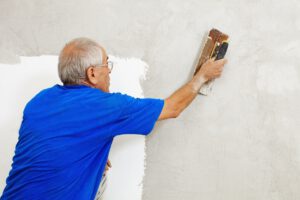If you notice minor cosmetic issues on your stucco exterior, it might be worth a quick Stucco Repair Philadelphia. However, if you have major problems with your home’s stucco, it’s best to call a professional for repairs.
Stucco can be prone to damage over time due to moisture, mold, and rot. These issues can be expensive to fix, so it’s important to address them as soon as possible.
Stucco is a durable material, but it’s also susceptible to cracking over time. Hairline cracks are normal and not a cause for concern, but when they’re large or appear on the exterior of your home, it’s best to repair them immediately.
There are a variety of reasons that stucco might crack, including improper mixing and installation, faulty foam trim, or moisture that has seeped behind the stucco. Thankfully, most stucco cracks are relatively easy to fix.
First, determine whether the stucco cracks are cosmetic or a sign of serious damage. If the stucco cracks aren’t cosmetic, they’re probably a sign of moisture seepage or mold, both of which can be dangerous.
If you can’t determine the type of crack, you should ask a contractor to take a closer look at it to see why it happened. They’ll be able to help you get it fixed so that it doesn’t happen again.
To make the repair, use a caulking gun to fill in the damaged area of the stucco. Be sure to apply the caulk so that it matches the color of the surrounding stucco. If you need to, add some coarse sand or fine gravel to the caulk to help it adhere better.
Next, let the caulk dry for at least 24 hours. When it’s cured, paint the repaired area to match the rest of your home’s paint.
This will give your stucco a smooth, even finish that blends in well with the rest of your house’s stucco. If you’re unsure how to do this, ask an experienced stucco repair professional to help.
Step 3: Mix a stucco patching formula that’s specifically designed for the kind of stucco you have and the type of crack you’re trying to repair. Quikrete manufactures several different stucco formulas for repairing different types of stucco.
Once you’ve found the right product, mix a small amount of the formula into the crack. You’ll need to do this at least two or three times before the repair is completely dry.
With the new stucco, apply it into the crack using a trowel or sponge and leave it to dry for at least two hours. When the stucco is completely dry, you can paint over it to ensure that no one will know that a crack in your stucco has been repaired.
Stucco is one of the most attractive exterior finishes on a home, but it can develop cracks and holes that need to be repaired. This can happen for a variety of reasons, including water damage or the impact of wind and snow. If left unchecked, these cracks can lead to a more serious problem that may require expensive and time-consuming repairs.
To repair stucco, you need to remove any loose material and prepare the area for patching. This includes removing the broken pieces of stucco and cleaning the hole or crack so that it’s free of dust and debris.
You’ll also need to make sure that there is no standing water in the hole or crack. This can cause the stucco to delaminate and cause even more problems down the road.
Once the holes or cracks are clean, you can start patching them with a premixed stucco repair product or a traditional mix of Portland cement, sand, and water. The mixture will need to be prepared as per the instructions on the label of the product.
Use a paintbrush to apply the stucco patching mix to the wall, making sure to get it as even as possible. Then let the patch dry overnight and sand it until it is smooth.
